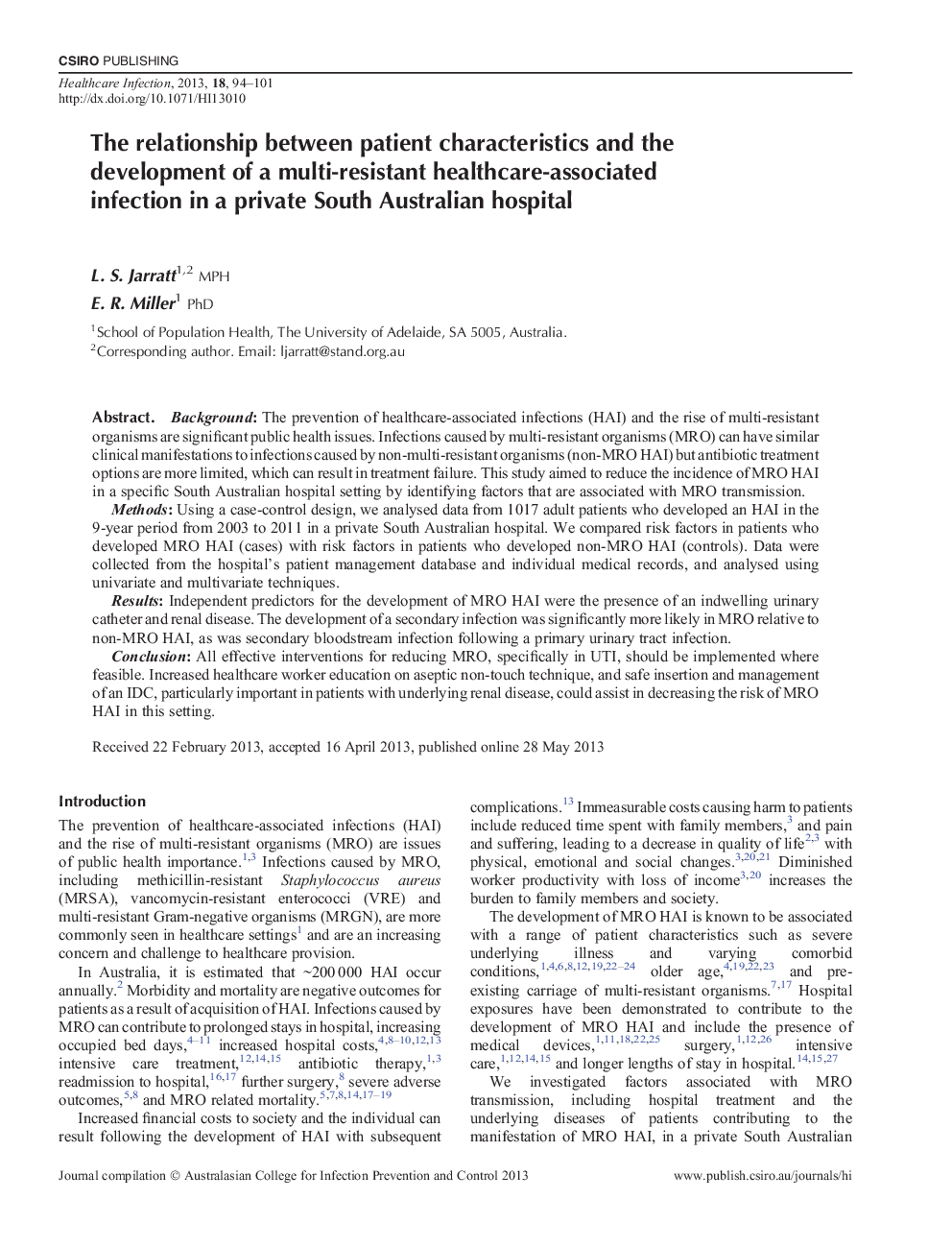| Article ID | Journal | Published Year | Pages | File Type |
|---|---|---|---|---|
| 2679643 | Healthcare infection | 2013 | 8 Pages |
BackgroundThe prevention of healthcare-associated infections (HAI) and the rise of multi-resistant organisms are significant public health issues. Infections caused by multi-resistant organisms (MRO) can have similar clinical manifestations to infections caused by non-multi-resistant organisms (non-MROHAI) but antibiotic treatment options are more limited, which can result in treatment failure. This study aimed to reduce the incidence of MRO HAI in a specific South Australian hospital setting by identifying factors that are associated with MRO transmission.MethodsUsing a case-control design, we analysed data from 1017 adult patients who developed an HAI in the 9-year period from 2003 to 2011 in a private South Australian hospital. We compared risk factors in patients who developed MRO HAI (cases) with risk factors in patients who developed non-MRO HAI (controls). Data were collected from the hospital's patient management database and individual medical records, and analysed using univariate and multivariate techniques.ResultsIndependent predictors for the development of MRO HAI were the presence of an indwelling urinary catheter and renal disease. The development of a secondary infection was significantly more likely in MRO relative to non-MRO HAI, as was secondary bloodstream infection following a primary urinary tract infection.ConclusionAll effective interventions for reducing MRO, specifically in UTI, should be implemented where feasible. Increased healthcare worker education on aseptic non-touch technique, and safe insertion and management of an IDC, particularly important in patients with underlying renal disease, could assist in decreasing the risk of MRO HAI in this setting.
